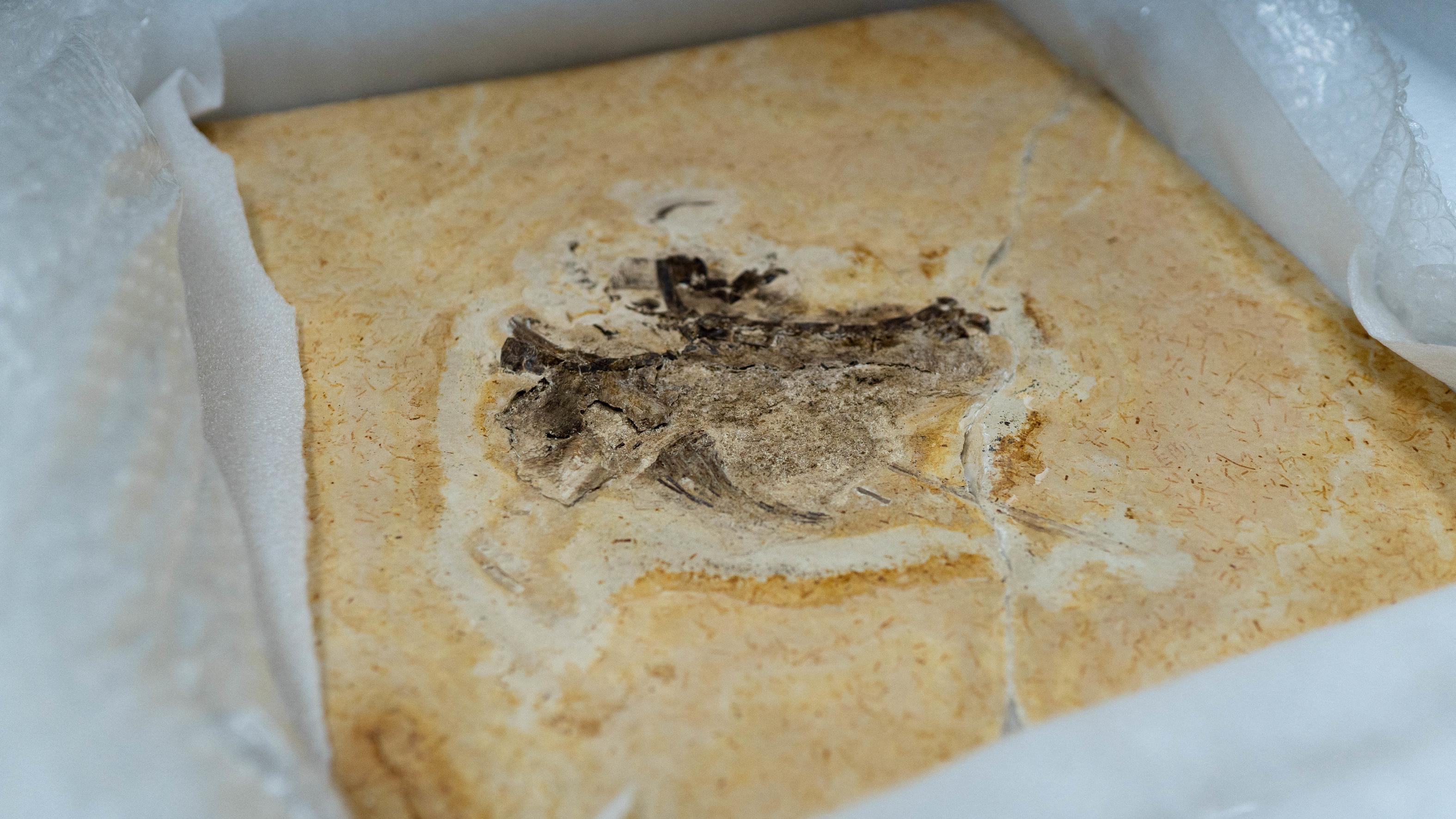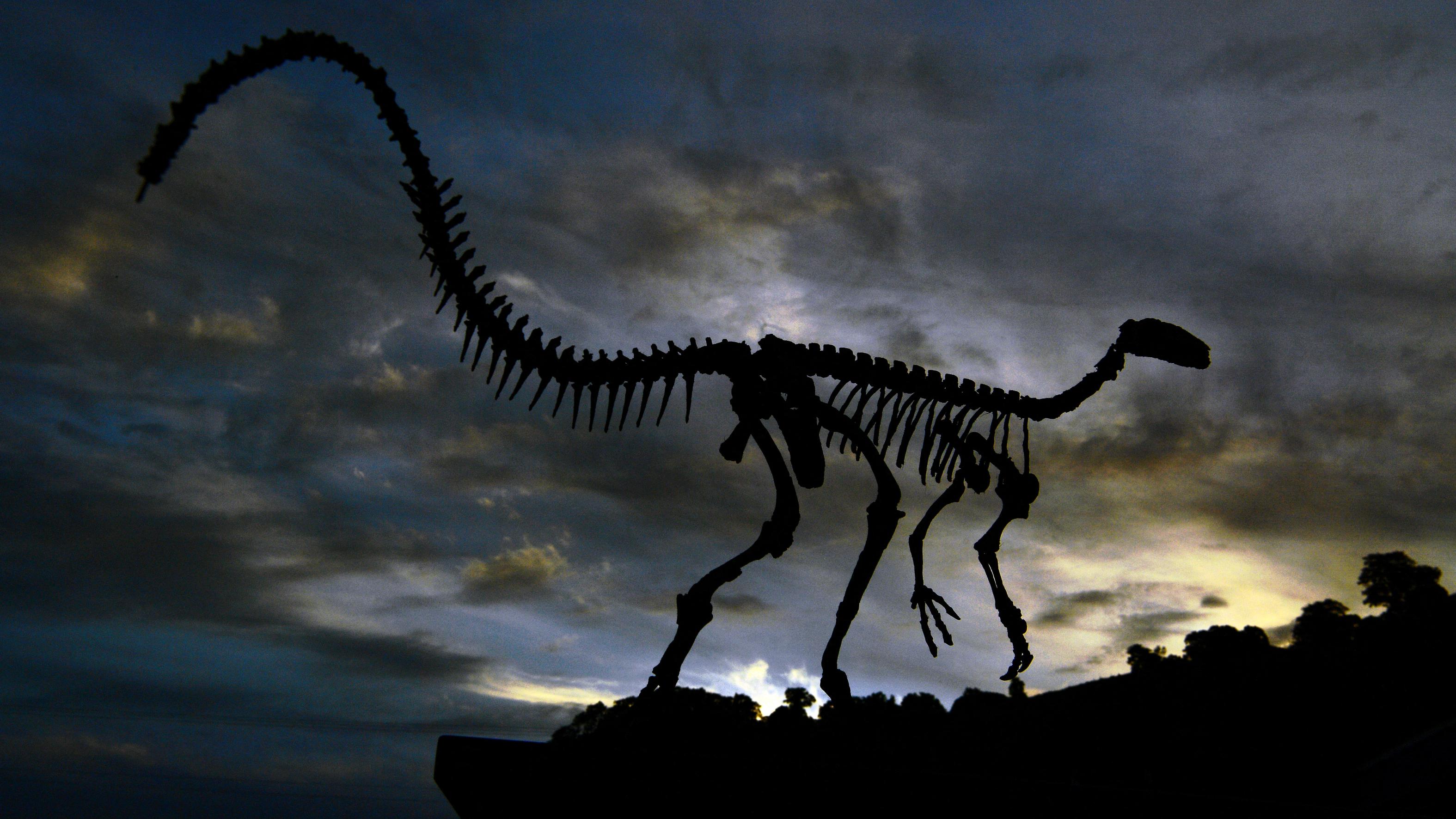 A handout photo released by Brazil’s Ministry of Science and Technology (MCTI) shows the fossil of a Ubirajara jubatus that had been taken irregularly to Germany three decades ago after being returned to Brazil at the Minister of Science and Technology headquarter in Brasilia, Brazil, on June 5, 2023. (PHOTO / AFP)
A handout photo released by Brazil’s Ministry of Science and Technology (MCTI) shows the fossil of a Ubirajara jubatus that had been taken irregularly to Germany three decades ago after being returned to Brazil at the Minister of Science and Technology headquarter in Brasilia, Brazil, on June 5, 2023. (PHOTO / AFP)
SAO PAULO — Brazil's geological service on Thursday announced a new species of dinosaur, a speedy animal that lived in the desert during the early Cretaceous period.
The new species, called Farlowichnus rapidus, was a small carnivorous animal about the size of a modern-day seriema bird, or about 60-90 cm (2-3 feet) tall, according to researchers. The discovery was published in scientific journal Cretaceous Research.
Leonardi donated one of the footprint samples, found in the so-called Botucatu formation, to Brazil's Museum of Earth Sciences (MCTer) in 1984
"From the large distance between the footprints found, it is possible to deduce that it was a very fast reptile that ran across the ancient dunes," the geological service said in a statement.
READ MORE: Fossil shows pugnacious mammal attacking a dinosaur
The early Cretaceous period stretched from 100 to 145 million years ago.
The fossilized dinosaur "trackways," as scientists call them, were first found in the 1980s by Italian priest and paleontologist Giuseppe Leonardi in what today is the city of Araraquara, in Sao Paulo state.
Leonardi donated one of the footprint samples, found in the so-called Botucatu formation, a group of rocks formed by an ancient dune desert, to Brazil's Museum of Earth Sciences (MCTer) in 1984.
 In this file photo dated Dec 2, 2019, the fossilised skeleton of a dinosaur is seen at the headquarters of CAPPA, a Brazilian research support center for paleontology in Sao Joao do Polesine, Brazil. (PHOTO / AFP)
In this file photo dated Dec 2, 2019, the fossilised skeleton of a dinosaur is seen at the headquarters of CAPPA, a Brazilian research support center for paleontology in Sao Joao do Polesine, Brazil. (PHOTO / AFP)
READ MORE: Dinosaur-killing asteroid impact fouled Earth's atmosphere
The footprints are different from all other known dinosaur footprints, said MCTer paleontologist Rafael Costa.


